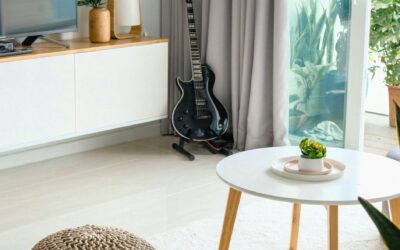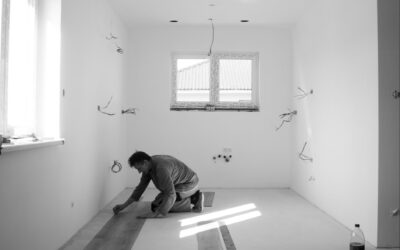LVT flooring is highly versatile and one of its main selling points is its ease of installation. Compared to carpet, LVT flooring is a doddle and products like click LVT don’t even require adhesive.
However, despite this ease of installation, to get to that point you must understand what LVT flooring can be laid on and in this article, I tackle the subject of chipboard. Can you lay LVT on chipboard? Yes, but it’s not as simple as that – read on to learn more.
What is LVT Flooring?
LVT = Luxury Vinyl Tiles
It is a versatile type of tiled flooring that is meant to emulate traditional hard floors like wood, stone, and parquet. Primarily made from vinyl, LVT flooring has multiple layers to make it durable, resistant to wear and tear, and comfortable to walk on.
It’s relatively low maintenance, looks fantastic, and products like click LVT flooring in the UK can be installed without professional assistance. You can get luxury vinyl tiles in a range of colours, styles, and installation types such as glue-down and click.
What is Chipboard?
Chipboard has many names and it is often called low density fibreboard or particle board. It’s essentially sheets of tiny wood particles mixed together with epoxy resin. The wood particles and resin are meshed together using intense pressing processes and the result is a tough and durable board with a smooth surface.
There are many different grades of chipboard and it is widely used to create subfloors, internal cabinet structures, flatpack furniture, building insulation, and even worktops. When exposed like worktops or furniture, the chipboard is coated with a veneer or materials like melamine.
Laying LVT on Chipboard
So, can you lay LVT on chipboard? Yes! But, forethought and planning is something I advise and this includes assessing the suitability of your chipboard floor and understanding the pros and cons to name a few.
Assess Suitability
The most important step is to assess the suitability of the chipboard and its condition. This includes looking for imperfections, scuffs, and damage as installing LVT flooring over damaged chipboard could cause issues and reduce the stability of the tiles.
Checking the levelling of the chipboard is also especially crucial as LVT flooring works best when it is installed on a solid, level surface.
Advantages and Disadvantages
The advantage of installing LVT flooring on chipboard is the reduced cost and time. If the chipboard is in a suitable condition you can simply lay the luxury vinyl tiles straight onto it and if click LVT flooring is used, adhesive isn’t required either.
The potential drawbacks include less insulation for your subfloor, less stability, and the potential for unforeseen circumstances if you haven’t inspected the chipboard quality properly.
Other Factors
Looking at the height of the room you wish to install LVT in can be beneficial too. If you have tall ceilings and plenty of height to work with, installing a plywood subfloor over the chipboard could be beneficial.
It’s also imperative to check for things like dampness and excess moisture as this can potentially cause warping and distortion if the LVT flooring is not watertight (most brands are).
Installation Methods for LVT on Chipboard
There are two main ways you can install LVT flooring on chipboard – either directly onto the material or on top of an installed plywood subfloor that goes over the particle board.
LVT Flooring Directly Onto Chipboard
As stated, if your chipboard subfloor is in good condition, it is possible to install the luxury vinyl tiles directly onto it. The chipboard must be prepared first, however, to make sure that it is smooth, level, and without imperfections.
Levelling is perhaps the most crucial part and if you find deviations in the height of the chipboard then a levelling solution is ideal. Once you are happy with the quality of the subfloor, the LVT flooring can be installed directly.
Glue-down LVT requires adhesive and is bonded to the subfloor whereas click LVT simply locks together on top without any glue and it usually includes an underlay.
LVT Flooring Onto Chipboard With a Plywood Subfloor
If your chipboard subfloor isn’t up to scratch, I advise installing a plywood subfloor on top of this around ½ to ¾ inches with the smooth side facing upwards. The plywood subfloor must still be level but other than that, the luxury vinyl tiles can then go directly onto it.
Laying LVT Flooring on Chipboard is Possible But With Considerations
Most chipboard subfloors are perfectly viable for LVT flooring installation but depending on the quality and your requirements, it can be beneficial to first place a plywood layer in between. This adds extra stability, helps with levelling, and improves the durability of your floor. If you are unsure of anything and want extra advice, feel free to contact us for assistance.









